Inbound Sales: Definition, Processes, Best Practices
Casey O'Connor
Inbound sales is a sales methodology that focuses on monitoring qualified leads through the buyer’s journey, learning the buyer’s needs through targeted research, and meeting them with a personalized proposal at precisely the time they’re most primed for a sales rep’s input.
Inbound selling is a really effective sales approach for modern buyers, and definitely one you’ll want to add to your sales playbook.
This article will outline the inbound sales process, as well as actionable sales tactics to implement in the field.
Here’s what we’ll cover:
- What Is Inbound Sales?
- Inbound Sales vs. Outbound Sales
- Why Is Inbound Selling So Effective?
- What Are the Stages of an Inbound Sales Strategy?
- The Inbound Sales Process
- How to Start Inbound Selling
- Inbound Sales Best Practices for 2023
- Combining Inbound and Outbound
What Is Inbound Sales?
Inbound sales is all about two things: the customer, and the timing.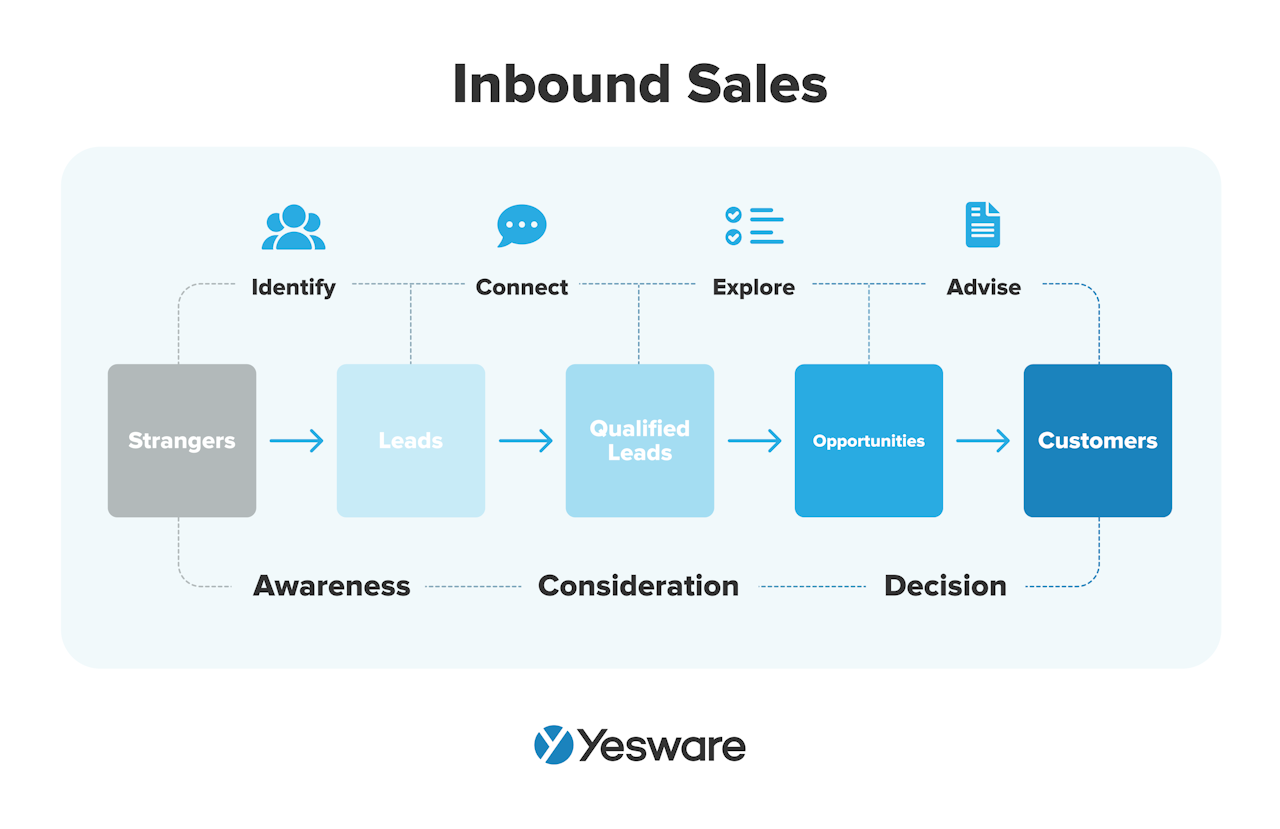 Contrary to outbound sales (which involves a lot of cold calling and impersonal sales pitches), inbound sales and marketing is a customer-centric approach that focuses on:
Contrary to outbound sales (which involves a lot of cold calling and impersonal sales pitches), inbound sales and marketing is a customer-centric approach that focuses on:
- Effective prospecting
- Attracting leads by creating and sharing valuable content
- Framing the offer around the individual buyer’s needs
Inbound selling is all about tailoring your messaging to attract and nurture the most qualified leads for your offer.
Inbound salespeople know that it’s counterproductive to rush the buying decision; instead, they monitor potential buyers’ activity (through LinkedIn, for example), and continually prepare to guide them through the rest of the buying process only when they indicate they’re ready for input.
Timing in inbound selling is crucial — inbound leads can turn cold very quickly if the sales rep is too pushy. Brian Signorelli, a well-known sales specialist calls this “changing the way you sell to match how people buy.”
Inbound Sales vs. Outbound Sales
There are many nuanced differences between inbound and outbound sales, but the primary difference between the two is who initiates the first outreach between buyer and seller.
With outbound sales, the sales rep makes first contact. This is the more “traditional” approach to sales outreach: cold calls and cold emails, trade shows, and paid lead lists.
In outbound sales, sellers cast a wide net, and contact large amounts of people who ultimately may or may not be interested in buying from them.
Inbound sales, on the other hand, rely on the prospect to make the first contact with the seller. This contact, however, isn’t “cold.”
Inbound sales let the buyer come to the seller first, but it’s a carefully-planned process in which sales and marketing attract and engage prospects with strategic content and valuable insights.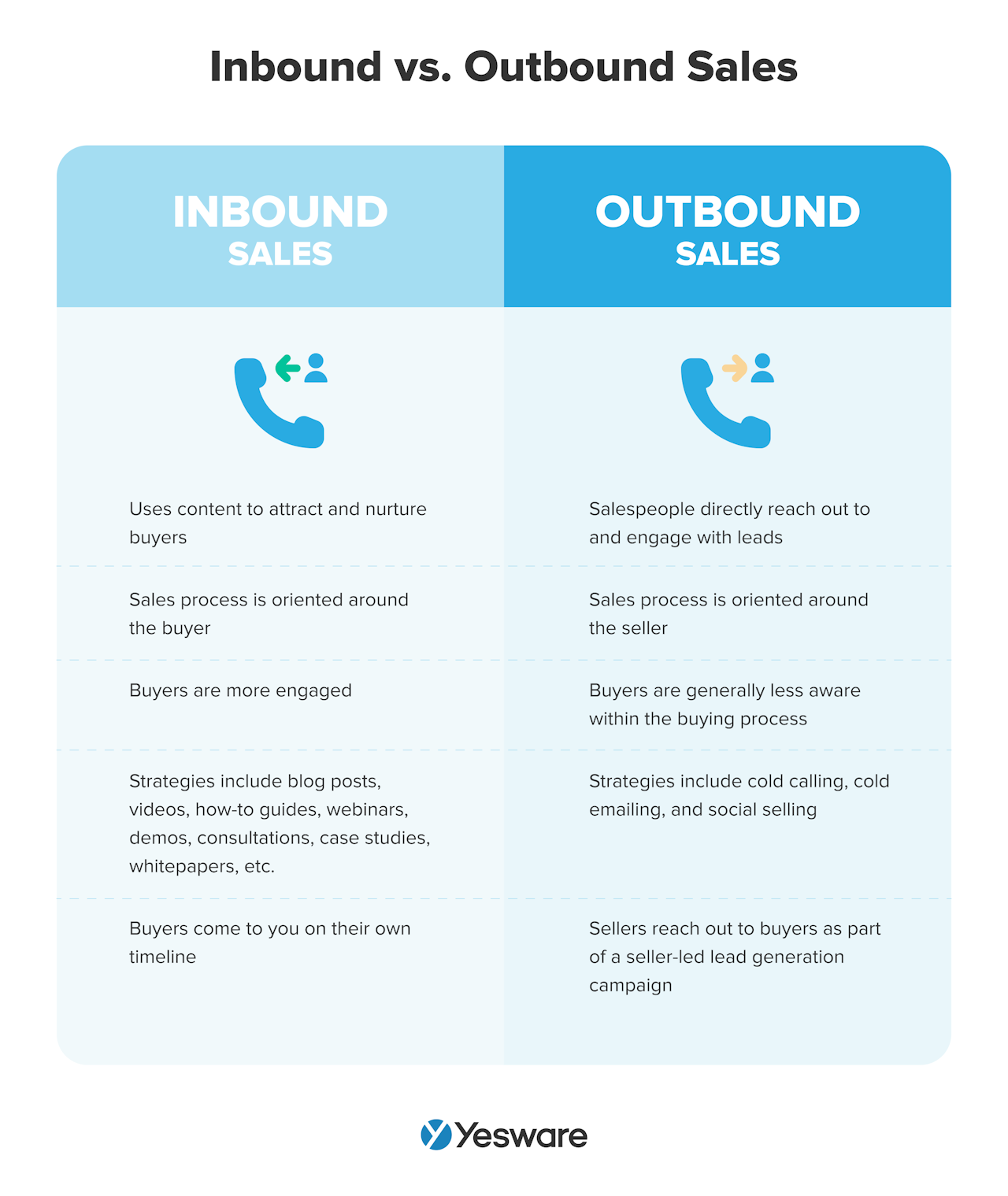 To be clear, both outbound and inbound sales can be very effective sales methods, at the right time and place.
To be clear, both outbound and inbound sales can be very effective sales methods, at the right time and place.
Inbound sales strategies, however, are gaining more steam due to the way the buyer’s journey is changing in today’s digital sales landscape.
Why Choose Inbound Over Outbound Sales?
There are two primary reasons that teams may choose to implement inbound sales over outbound.
The first is the expense. In general, an inbound sales strategy costs less to implement than an outbound one.
In fact, inbound leads cost 60% less to acquire than outbound leads.
The other main reason some sales teams choose inbound over outbound sales is that inbound more reliably creates sales relationships that are based on value, trust, and credibility.
Because inbound sales is all about designing the sales funnel to seamlessly meet personalized needs throughout the buyer’s journey, it helps give buyers the impression that the sales team knows exactly what they’re looking for.
Why Choose Outbound Over Inbound Sales?
All that being said, there are also some very valid reasons that sales teams might find outbound strategies more productive than inbound ones.
First, outbound sales strategies are generally much faster to implement than inbound ones and, therefore, generate quicker results.
With excellent lead generation practices, outbound sales strategies can actually be very exciting, with fast and often lucrative success.
Outbound sales also give sales teams more control over their sales pipeline. Sales reps have the power to populate their pipeline with highly qualified leads that are likely to say yes when they reach out to them.
Why Is Inbound Selling So Effective?
The buying process has changed dramatically in the last decade. With virtually limitless access to buying information online, buyers today are more than halfway through the buying process by the time they make contact with a sales rep.
Inbound sales helps sales reps stay relevant and top-of-mind as buyers navigate the independent stages of the buying process. Inbound strategies help attract and maintain buyers’ attention by offering valuable insight and content relevant to their purchasing decision.
There are a number of benefits to using inbound sales strategies: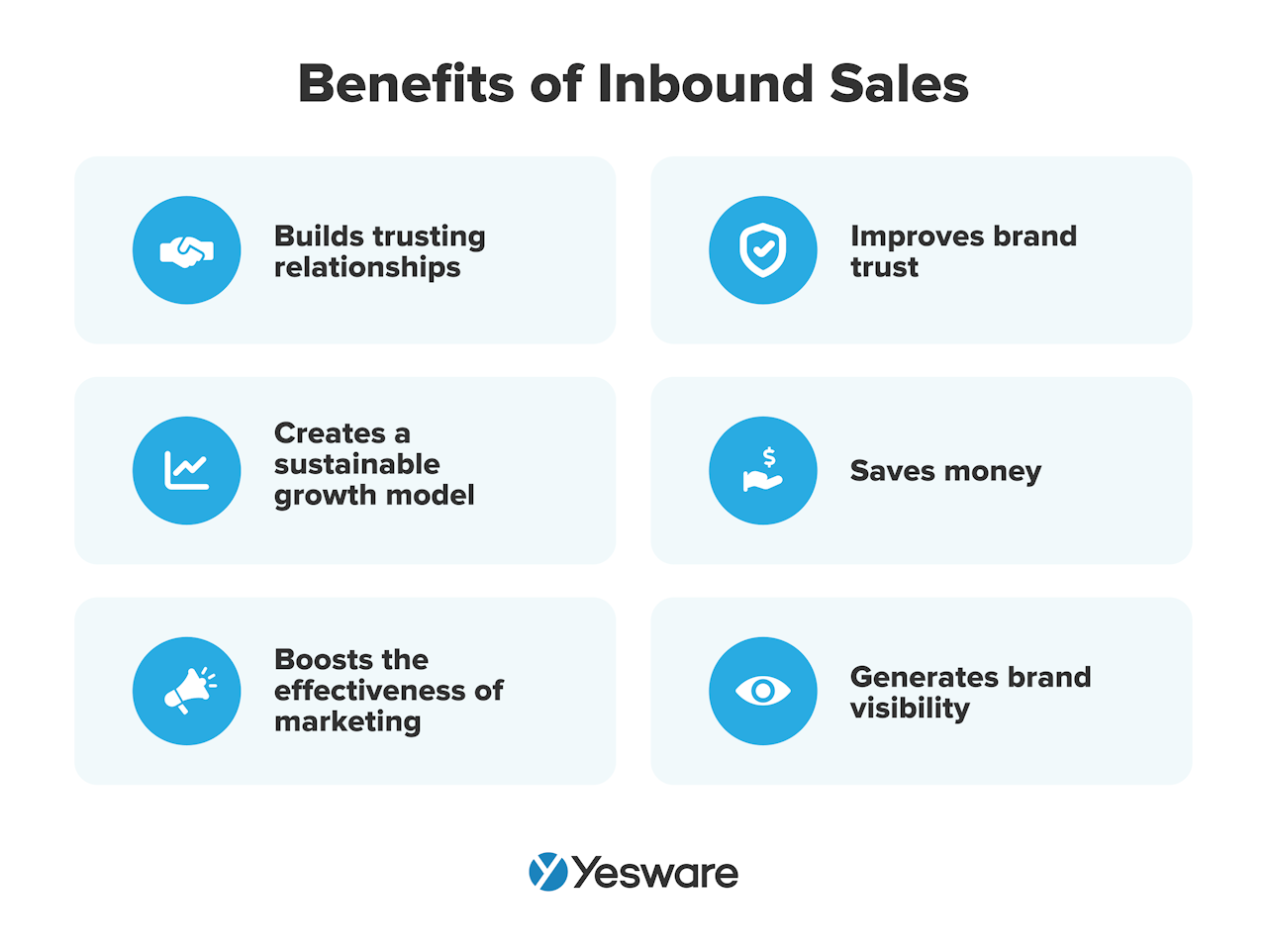 And research shows this strategy works: according to LinkedIn, 62% of buyers respond to salespeople who connect by sharing insight and relevant content.
And research shows this strategy works: according to LinkedIn, 62% of buyers respond to salespeople who connect by sharing insight and relevant content.
Benefits the Sales Funnel
Inbound sales can be very beneficial to the sales process because it helps attract great-fit leads at the top of the sales funnel.
It’s easy to see how effective this strategy is when it’s juxtaposed against outbound sales.
With outbound sales, sellers cast an overly-wide net when they generate leads. They then have to research and qualify each of those leads before they pass them through the rest of the funnel. 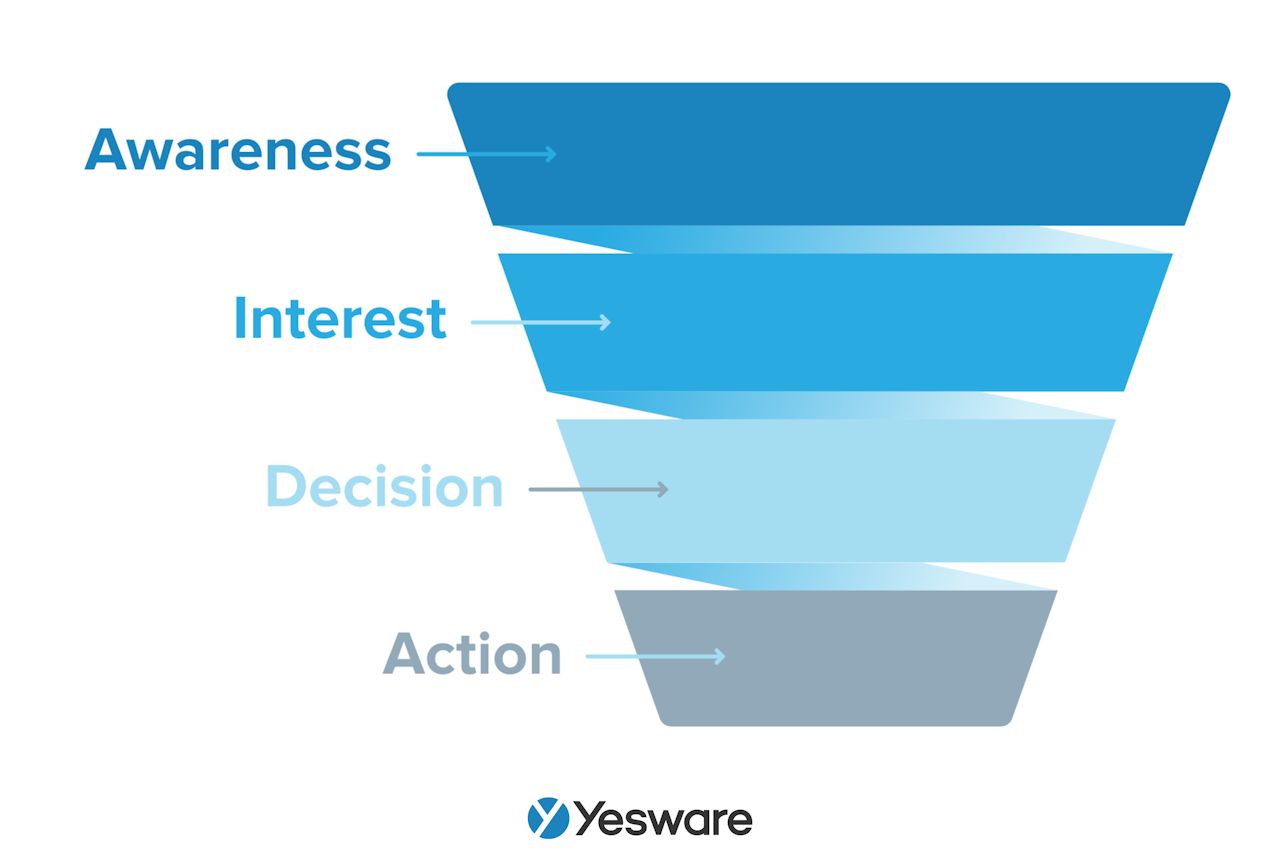
Ultimately, many of the original leads are filtered out through this process. This isn’t a bad thing, per se — sales is partially a numbers game, after all — but it’s a lot of work upfront to generate 3x (or more) as many leads as you’ll ultimately work with.
Inbound sales is designed so that some of this filtering happens automatically.
Many inbound sellers find that much of the work of qualifying leads is already done by the time they make contact. That’s because inbound leads are self-selecting. They become drawn in by your content and marketing initiatives, which makes it very likely that they’re a good fit for what you’re selling.
This process also gives inbound sellers a lot of leverage further down the funnel. Inbound marketing strategies allow salespeople to build trust early in the process and position themselves as thought leaders and advisors in the industry.
What Are the Stages of an Inbound Sales Strategy?
Buyers move through three phases of the buyer journey: awareness, consideration, and decision. While buyers move through these phases, inbound salespeople must focus on four key steps: identify, connect, explore, and advise.
 You’ll notice that each of the stages of inbound selling loosely lines up with a corresponding stage in the buyer’s journey.
You’ll notice that each of the stages of inbound selling loosely lines up with a corresponding stage in the buyer’s journey.
1. Identify
Salespeople who follow an inbound selling approach should prioritize active, engaged leads over passive ones. Inbound marketing teams usually work closely with inbound salespeople — consistent messaging goes a long way in building trust with potential buyers.
2. Connect
At this stage, inbound salespeople are researching their prospects, usually via a personal interaction. Sales reps connect with prospects in this stage after they’ve made some outreach to the company like opting into a lead magnet or signing up for a webinar.
Inbound sellers can usually (dis)qualify leads through one or more of four criteria: BANT. 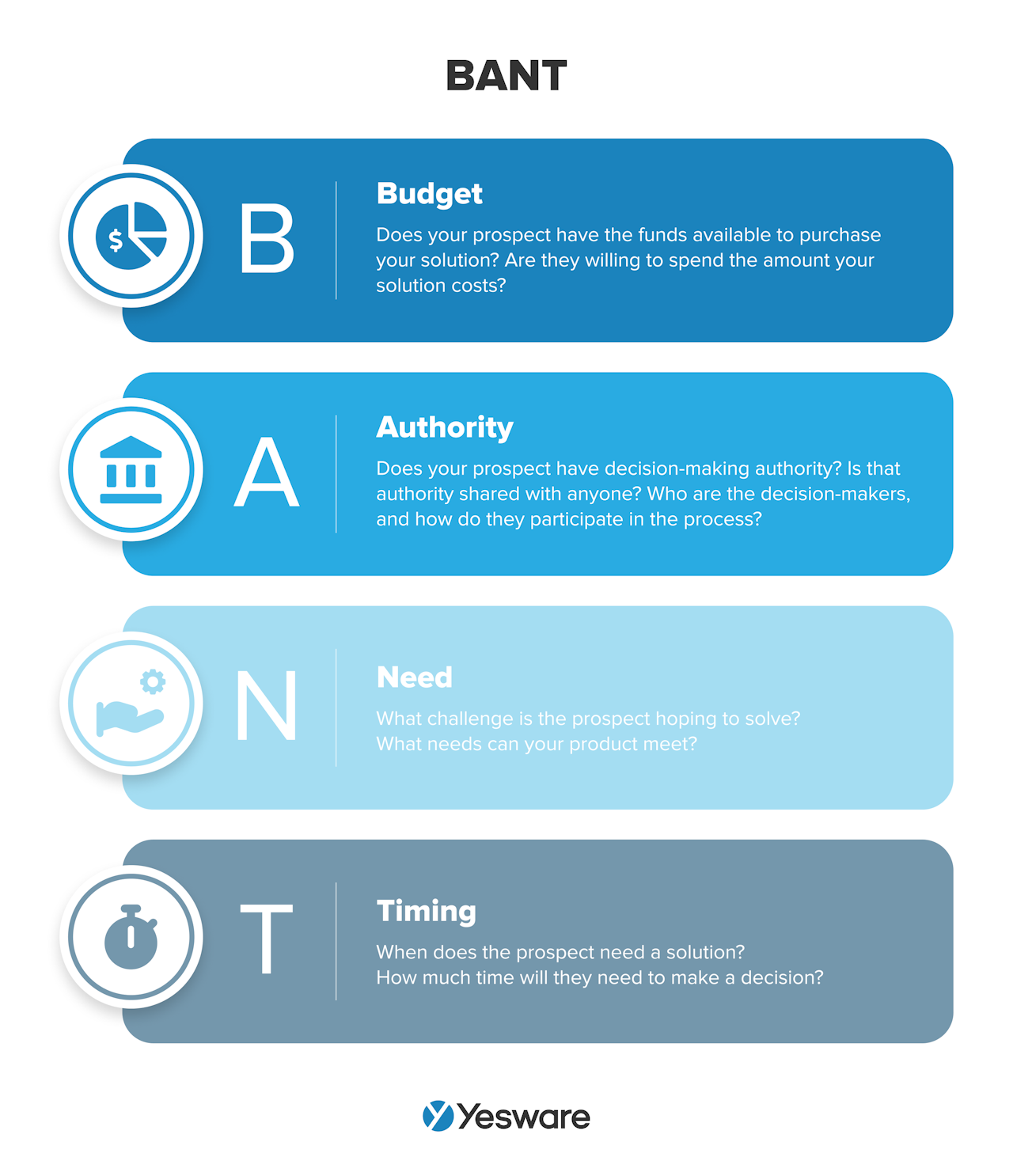 The sales rep’s interaction with the potential buyer also gives them insight into the buyer’s readiness for guidance in their purchasing decision.
The sales rep’s interaction with the potential buyer also gives them insight into the buyer’s readiness for guidance in their purchasing decision.
Learn More: How Quickly Should You Contact Inbound Leads?
3. Explore
Once the potential buyer signals that they’re ready to learn more about potential solutions to their pain point, inbound sellers can get to work. But steer clear of the traditional “Features & Benefits” sales pitch.
Instead, take a more consultative role. Make a genuine effort to hear your customer’s concerns so that you tailor your proposal around solving them. 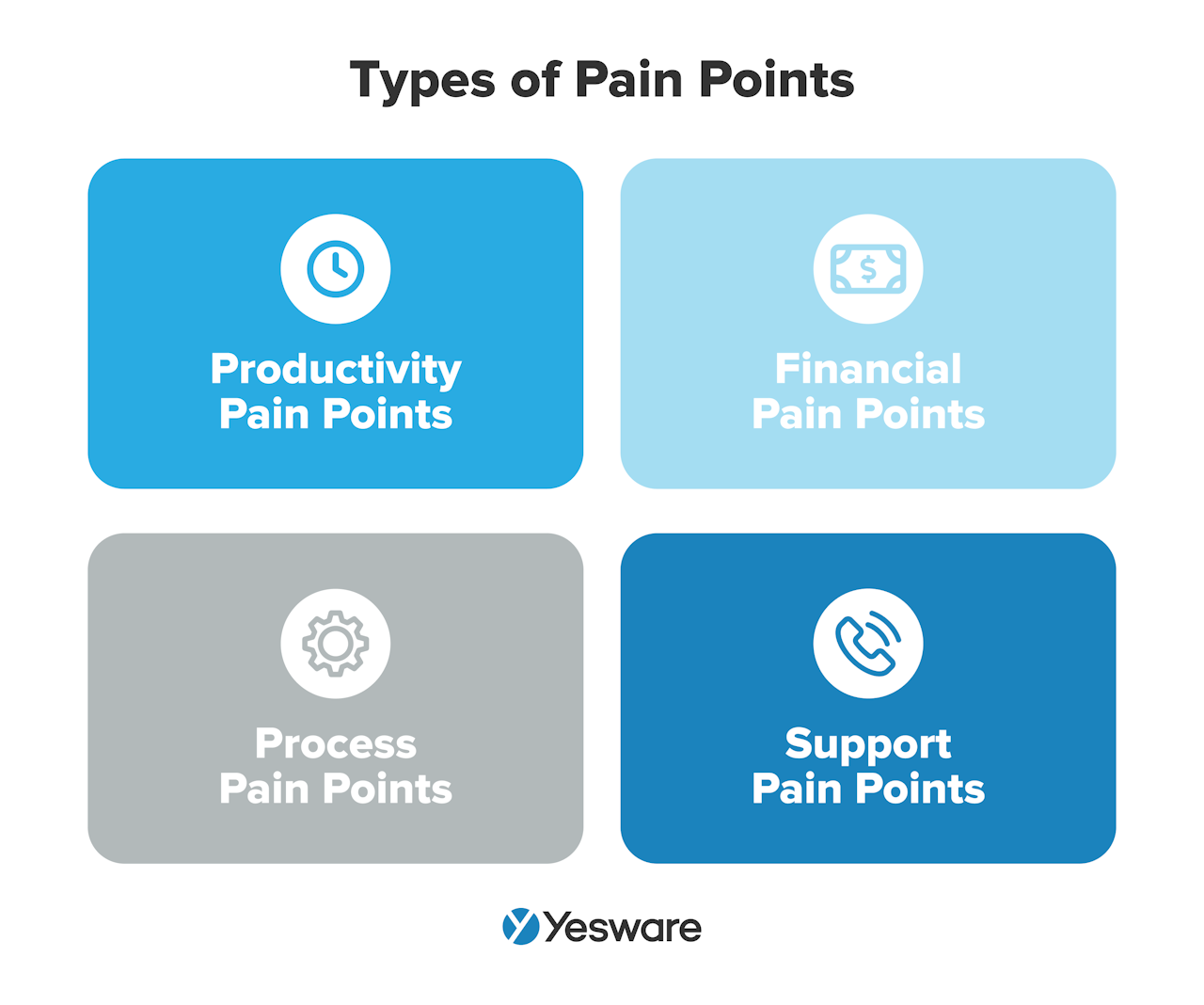
4. Advise
At this point, any good inbound sales professional will be able to tell whether or not the offer is a good fit. Inbound sellers use the information they gathered earlier in the process to craft a personalized and highly effective proposal.
The sales process should feel like it comes to a close naturally, with mutual benefit between the buyer and sales rep.
The Inbound Sales Process
Here’s what inbound sellers need to know about how to execute this sales process in the real world.
Specifics, examples, details — make these actionable.
Contact
There are many ways to make lead generation easy and optimized so that you’re maximizing your efforts on well-qualified and engaged leads. Try one of the following outreach strategies to tighten this stage of your funnel:
- Leverage social media: Ask for introductions on LinkedIn or other platforms. Referrals represent the highest close rate by source by a landslide.
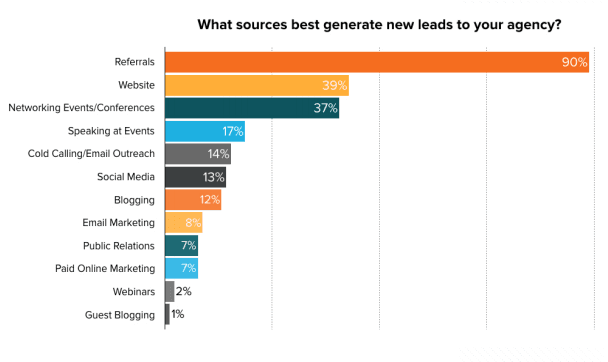
- Subscribe and join: Look for relevant blogs, forums, and social groups in your sales field. This is a great way to share value in a non-intrusive manner.
- Put yourself on the map: Although it’s hard to imagine adding more work to your plate, there’s a lot to be said for creating your own unique content to share with your audience and prospects. Sales professionals who are thought leaders in their industry gain huge points in the expertise category, which is a fantastic way to earn client trust.
Align
After you make your initial contact, your priority should be connecting with your prospect. Look for ways to meet them exactly where they are in their buyer’s journey.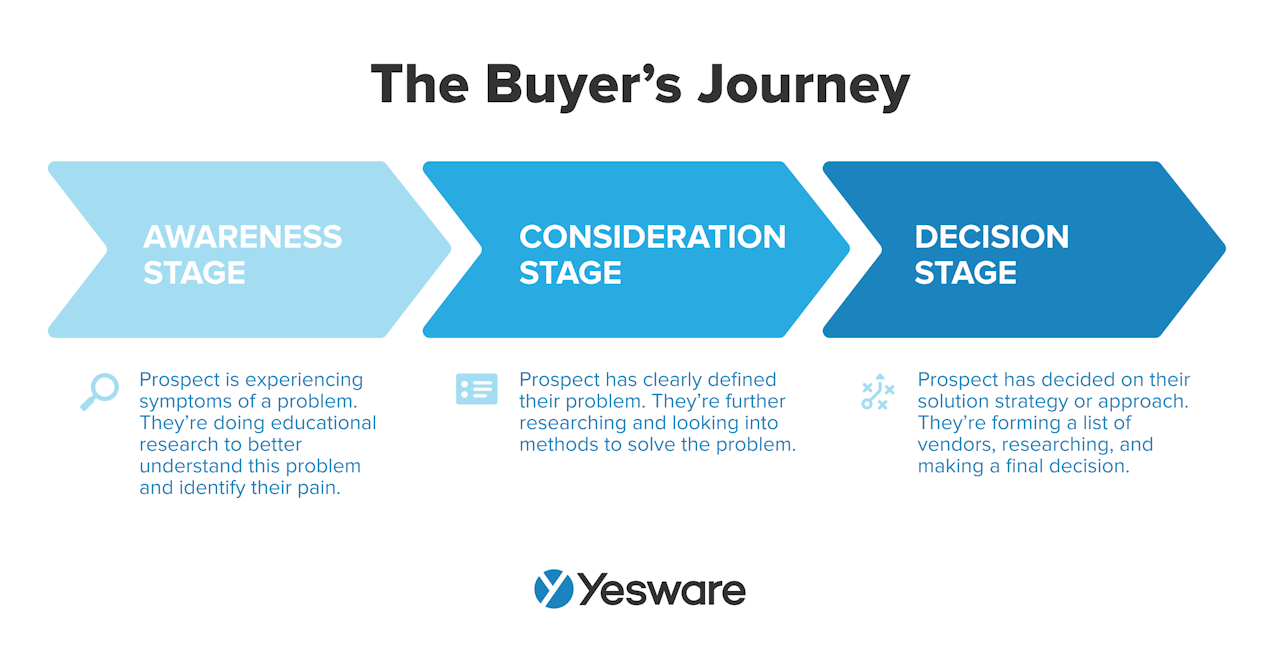 Connecting with your prospects doesn’t have to be complicated. You can mention common interests, mutual connections, or even anything noteworthy about the buyer’s industry.
Connecting with your prospects doesn’t have to be complicated. You can mention common interests, mutual connections, or even anything noteworthy about the buyer’s industry.
That being said, crafting personalized correspondences with each and every lead can be unrealistic, time-wise. One way to resolve this is by creating a template and/or sequence map for each of your customer personas. These personas and sequences might require some legwork upfront, but they’ll go a long way in making the process more efficient.
Consult
The consulting conversation is crucial for propelling the relationship (and potential deal) forward successfully. Keep the following tips in mind as you learn more about your customer’s needs:
- Ask questions: Open-ended questions are particularly effective and can get the customer to share their concerns and even objections in a non-intimidating way.
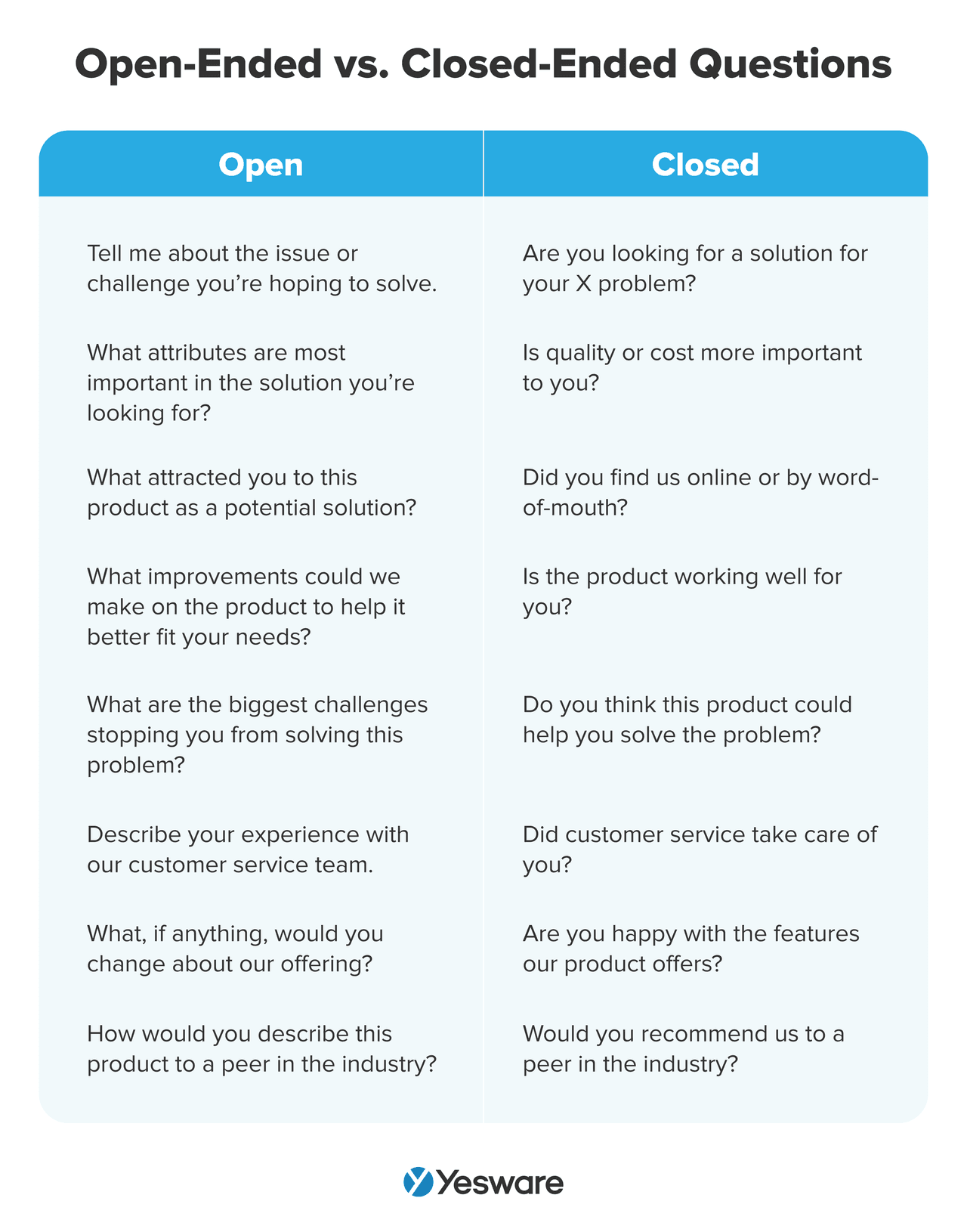
- Highlight the gaps: You’ll want to try to balance the conversation between the prospect’s future goals and current challenges. In doing so, you’ll help illuminate to them that they don’t yet have a solution to reach those goals.
- Discuss budget and timeline: While you don’t want to get into the real nitty-gritty of the final contract, it is important to discuss some specifics around how your offer will (hopefully) fit into the client’s budget and timeline requirements.
Propose
If the sales rep has been successful thus far, the proposal stage should feel easy and natural to execute. Here are a few ways to close the deal with the customer feeling like they’re in good hands.
- Paraphrase what you heard: Recap your conversation, making sure to demonstrate your thorough understanding of the customer’s needs and goals. This will help them feel like you’re invested in helping them solve the problem. Active listening during the consultative portion will help when it comes time to paraphrase.
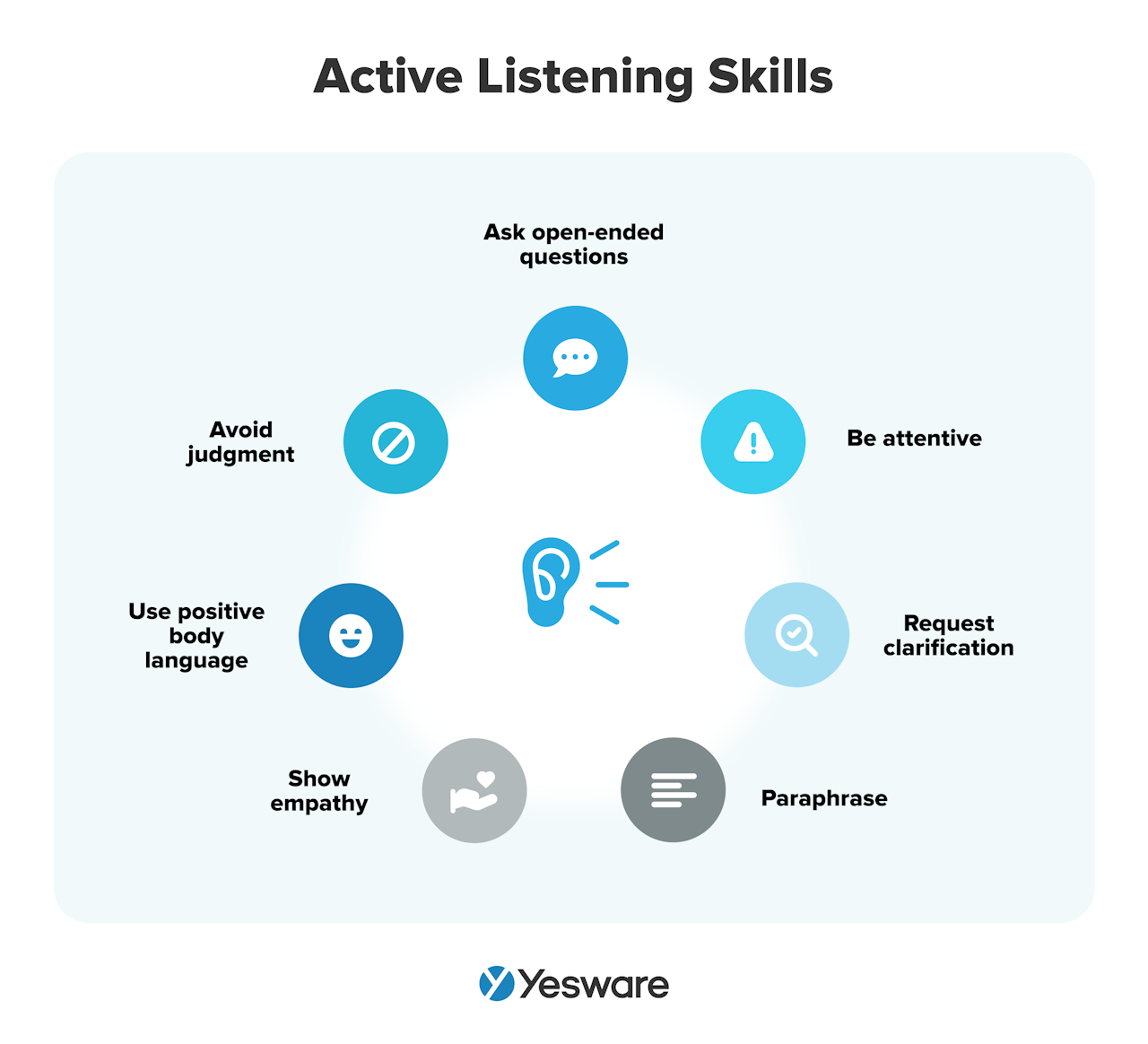
- Offer a solution (maybe two): If there are a few ways to approach the potential buyer’s problem, tell them that. Outline their options with them, and trust them to handle the decision-making process. Remember, buyers are turned off by pushiness or desperation to close a deal.
- Be specific: Now’s the time to get into the details. Discuss pricing, timeline, and decision deadlines, and follow up soon after the meeting to discuss the next steps.
How to Start Inbound Selling
Your inbound sales strategy will get more refined and more successful as you implement the tactics we outlined here.
Get Social
If you’re not using social media to its fullest extent, start now. Social media platforms are built for inbound marketing and can be an amazing way to jumpstart your inbound sales program.
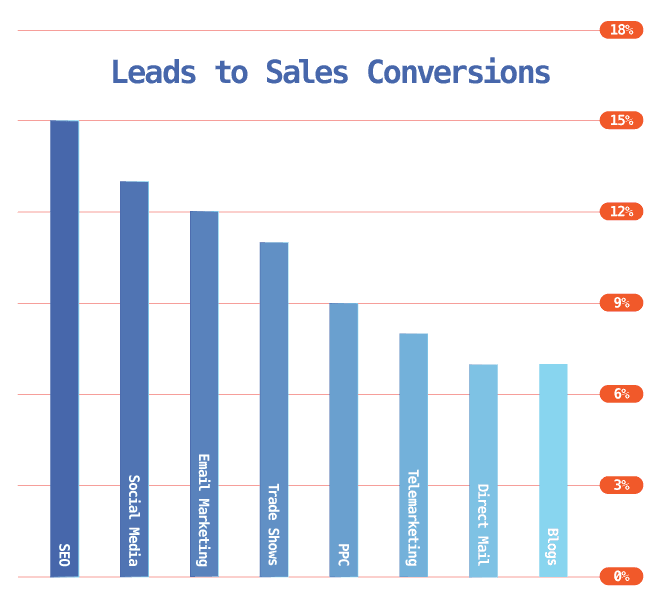
Link Up
Make sure your sales and marketing teams have aligned their processes and goals.
With inbound sales, the marketing and sales roles are very dependent on one another and will require consistent collaboration.
Get Creative
Remember — creating authentic, relevant, shareable content is another highly effective and organic way to generate warm leads. If you’re not sure where to start, check out your own inbox or favorite blogs. What makes you open their stuff? Why do you continue to stay engaged in their content?
Think about what makes those companies stand out, and try that out on your own — most times, it’s easier than you think.
Tip: Grab some data-backed findings and sales engagement trends to enhance your strategy.
 Sales Engagement Data Trends from 3+ Million Sales ActivitiesLooking at millions of tracked email activity over the past few years, this ebook is filled with our top studies and findings to help sales teams accelerate results.
Sales Engagement Data Trends from 3+ Million Sales ActivitiesLooking at millions of tracked email activity over the past few years, this ebook is filled with our top studies and findings to help sales teams accelerate results.
Inbound Sales Best Practices for 2023
Whether you’re just getting started with inbound sales, or hoping to level up your strategies and skills, there are a few best practices to keep in mind as you use this method to generate leads and sign new customers.
Prioritize the Buyer’s Needs (Not the Sale)
There’s no faster way to scare away a great-fit inbound lead than by making them think you’re only in it for the sale.
Inbound sales is about meeting buyers where they are in the process. It means allowing them to feel in control of how and when they interact with your team and your content.
If the buyer isn’t ready — don’t push them. Inbound sales is much more about attracting, qualifying, and personalizing a deal for best-fit customers than it is about making the most sales.
A-B-H
Along those same lines, ditch the A-B-C (Always Be Closing) advice that usually goes along with sales, and instead, adopt an A-B-H approach — Always Be Helping.
Again, inbound sales is not about closing deals or earning commission. It’s about providing value to prospects throughout the buyer’s journey so that they are equipped with everything they need to know to purchase and fully benefit from your product.
In fact, the best inbound sellers know that sometimes the value they offer doesn’t need to be product-related at all. Sellers who take on the role of consultant and trusted advisor, offering wisdom and insight to buyers regardless of its relevance to the purchase, often find the most success with inbound strategies.
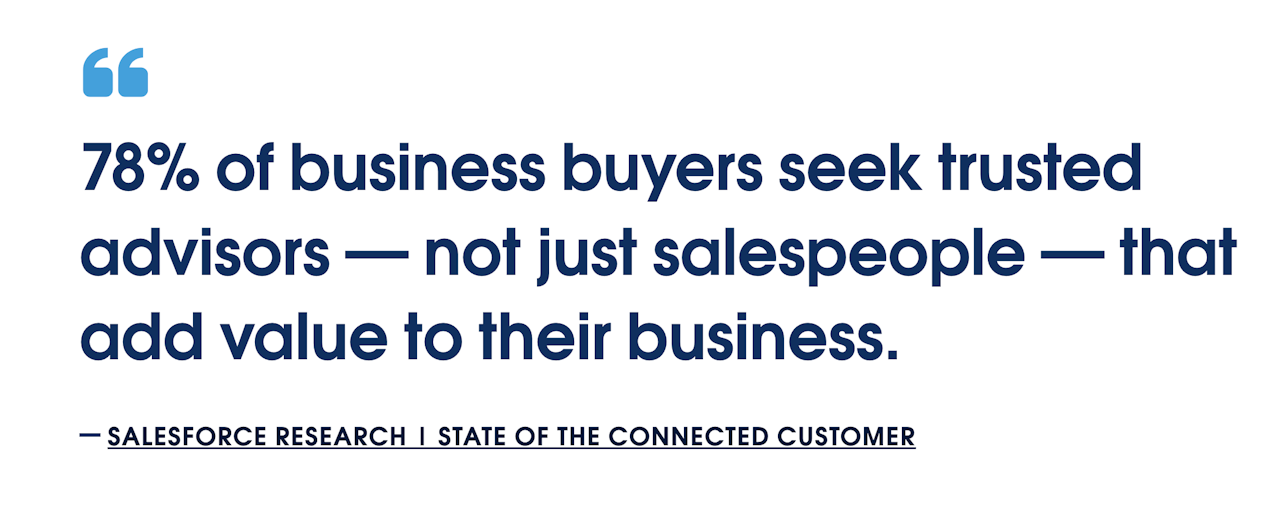
Define the Buyer’s Journey
Although the buyer’s journey framework generally has some components that are standard across industries, there are some specific differences for each individual industry and target market.
It’s important that sellers and marketers work together to outline the specific stages and steps of your product’s buyer’s journey. A carefully-mapped buying process will help your teams create the most relevant and attractive inbound marketing strategies.
Nail Down ICP and Buyer Persona
If you haven’t already, find a time for sales and marketing to sit down together and create detailed ideal customer profiles (ICP) and buyer personas.
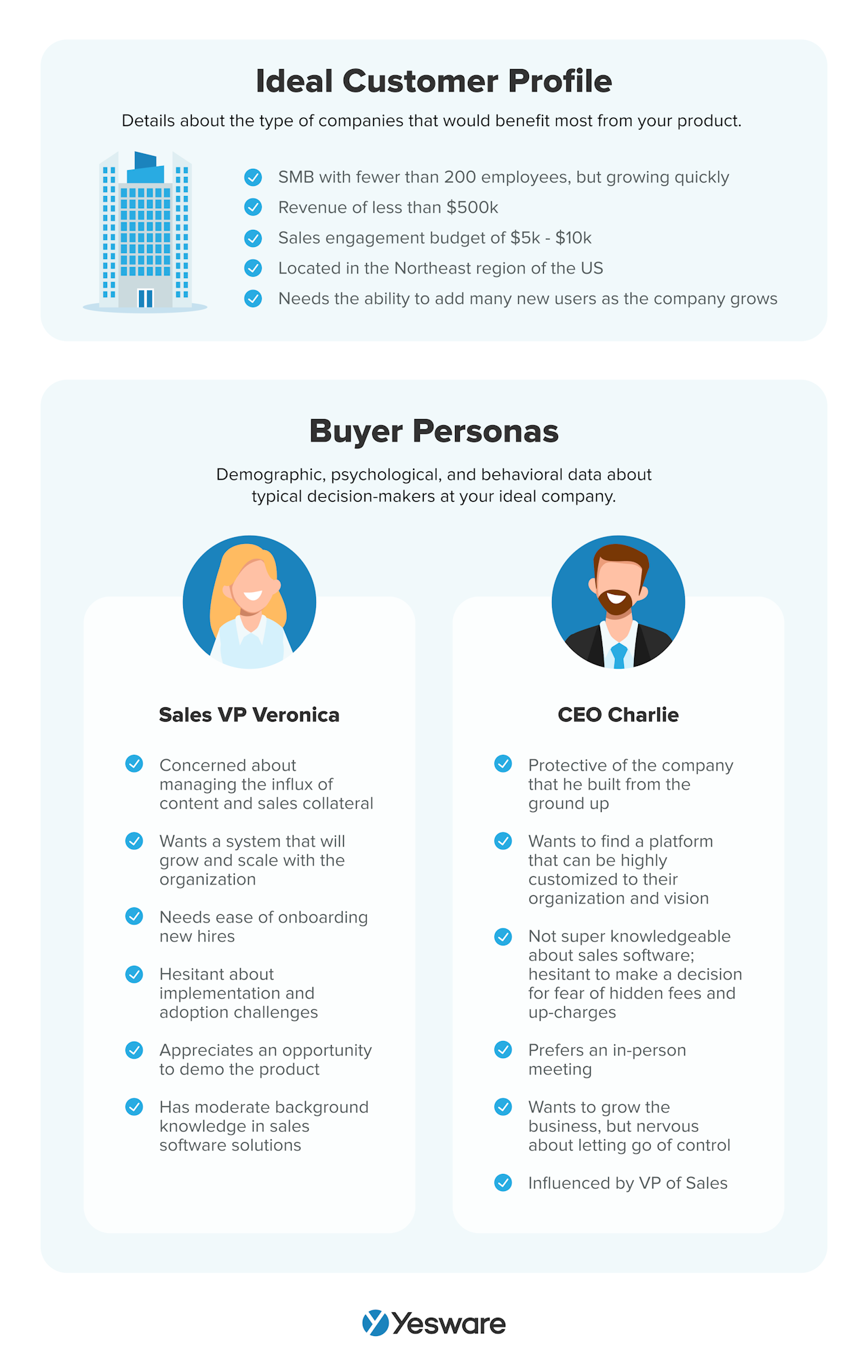 These profiles will help you create just-right content for the prospects who are most likely to be interested in your product.
These profiles will help you create just-right content for the prospects who are most likely to be interested in your product.
Personalize Your Outreach
A whopping 75% of B2B buyers expect personalization in the sales process. This means it’s a non-negotiable for salespeople who want to win more deals.

Fortunately, inbound sales makes personalization easy. Sellers and marketers can use tools like Yesware to track and analyze which content is most relevant for each type of buyer. They can then tailor their outreach strategies to get the right sales collateral in the right hands at the right time.
Combining Inbound and Outbound
In truth, most organizations will benefit from a combined approach consisting of both inbound and outbound sales strategies. Here are a few ideas about how to use them both strategically in your sales strategy.
Use Inbound Email Strategies With Outbound Contacts
If you manage to successfully connect with an outbound contact, you might consider starting them on an email drip campaign that’s tailored to their particular stage of the buyer’s journey.
Inbound strategies like email sequences can help outbound sales strategies feel much more personalized and generate a lot more value for the prospect.
Use Social Media to Improve Your Cold Outreach
Social selling — particularly social listening — can be a very useful inbound tool for maximizing the effectiveness of outbound outreach.
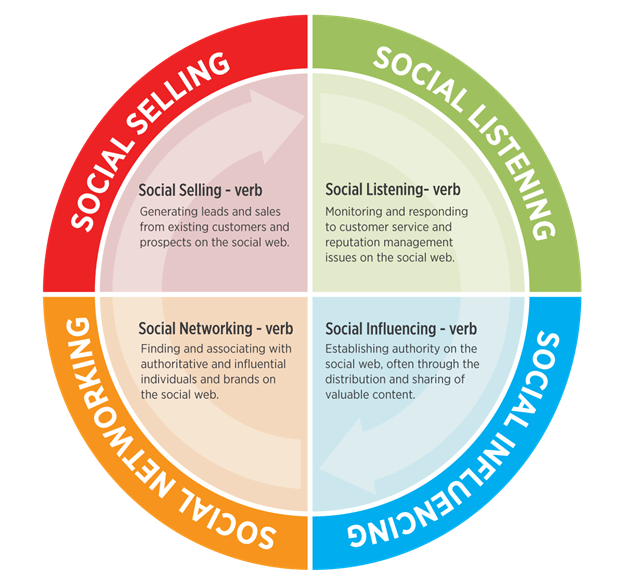
Social listening can enable sales reps to get a “sneak peak” into what a prospect thinks, believes, or has interacted with regarding their brand before they reach out.
Become More Strategic About Account-Based Marketing
Account-based marketing (ABM) relies upon a sales team’s ability to target, engage, and persuade well-qualified, high-value accounts.
There are ways to implement ABM that incorporate both inbound and outbound strategies. Some sales teams identify and research companies that fit the ICP before ever reaching out; others develop highly targeted marketing campaigns that encourage prospects to come to them.
Regardless of the specifics of your ABM approach, it’s important to make sure it’s optimized. When used correctly, it can generate a lot of well-qualified and lucrative referrals.
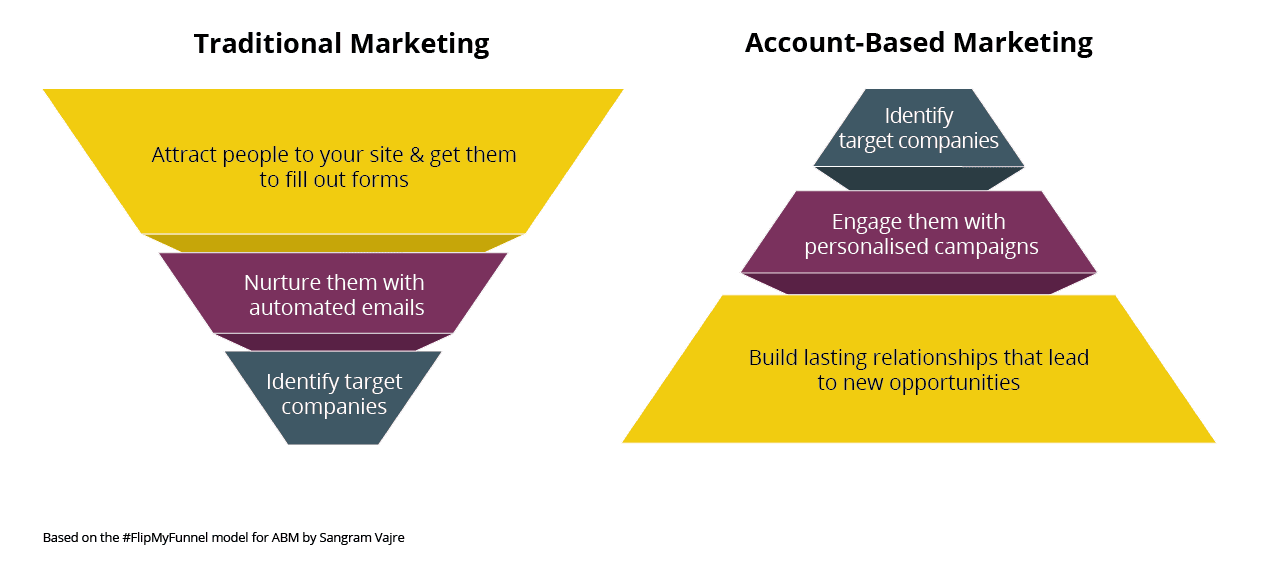
Do you use inbound selling strategies? How do they complement your other outreach? What strategies have you found most effective for inbound sales?
This guide was updated on February 9, 2023.
Get sales tips and strategies delivered straight to your inbox.
Yesware will help you generate more sales right from your inbox. Try our Outlook add-on or Gmail Chrome extension for free, forever!
Related Articles
Melissa Williams
Anya Vitko
Casey O'Connor
Sales, deal management, and communication tips for your inbox

